Persepolis City (History, Map, Facts, Architecture)
Whether you are an adventurer or not, you might have heard about the popular historical city of Persepolis. This archeological city is situated 10 kilometers from the city of Shiraz in Iran. The complex was constructed 2,500 years ago during the rule of the Achaemenid Empire in ancient Persia; therefore, Persepolis was registered in the UNESCO World Heritage Centre as a national antique site in 1979.
Persepolis is one of the glorified symbols of Iran that still shines like a gem to this day and is a major tourist attraction of the country.
About Persepolis City
Persepolis illustrates the architectural splendor of the palace of the kings of ancient Persian dynasties. At the height of their power, the Achaemenid kings built their stone palaces in the heart of a mountain and near the city of Shiraz to leave a vivid picture of the expanse of their nobility for future generations.
Persepolis is a collection of royal palaces and was a place for royal ceremonies in the Achaemenid Empire. Persepolis was gradually built around the 5th century BC and expanded during the rule of various Achaemenes kings.
The founder of Persepolis was Darius I Achaemenid, also known as Darius the Great, the third King of the empire. His successors were Xerxes the Great and Ardeshir I where each of them built new palaces inside Persepolis.
The petroglyphs and images left in Persepolis indicate the presence of many skilled architects and engineers from various regions under the rule of the Achaemenids in the city.
Persepolis is a Greek title for this ancient city. In Persian, this location is called “Takht-e Jamshid,” which translates to “The Throne of Jamshid.”
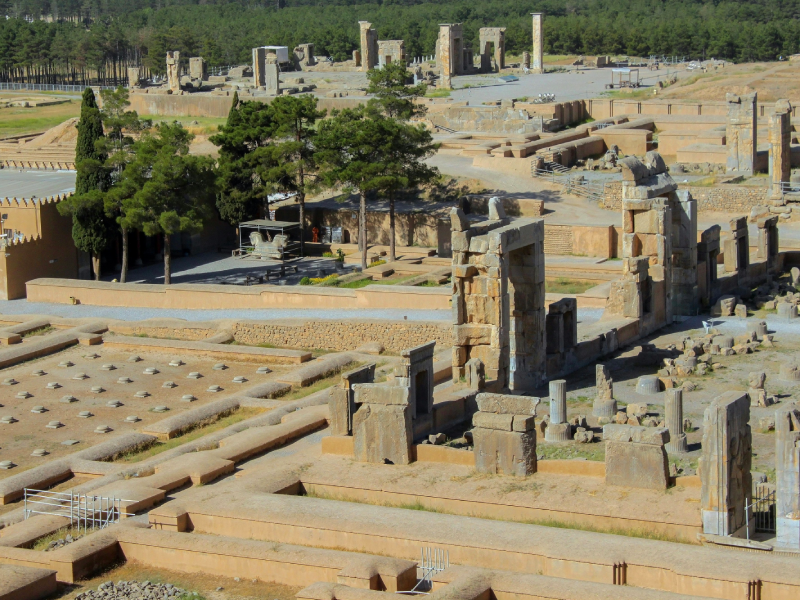
The columns, capitals, inscriptions, carvings on walls, palaces, and gates left on the grounds of Persepolis are among the most famous works of this civilization in the world. The city of Persepolis, which is also known as “The Land of the Persians,” has attracted many tourists from all over the globe to Shiraz for many years.
Why is Persepolis so famous?
Persepolis is among the most famous tourist attractions in Iran, Fars province, and Shiraz city. The city is a symbol of grandeur in ancient Iran and one of the truly must-see places in Shiraz.
Perhaps Persepolis and its remaining buildings and columns can be seen as clear evidence of the history of the Achaemenid civilization in the world. Therefore, eminent scientists and archaeologists from all over the world have traveled to Iran to visit Persepolis and discover more about this archeological location.
Persepolis City History
The construction of Persepolis, one of the oldest cities in Iran, commenced about 25 centuries ago at the foothills of Rahmat mountains by Darius I.
The construction of the buildings of Persepolis dates back to 518 BC, that is, more than 2,500 years ago. Darius I, who was the third Achaemenid king, ordered the construction of a large palace in the mountains near an area in Iran called Marvdasht. However, the process of building the mansions and large monumental statues of Persepolis took a very long time to finish, therefore, the construction was continued during the reign of his successors.
At first, this structure was known as Pars, which meant the City of The Persians. The Greeks called it Persepolis, meaning The Persian City in Greek. During the Sassanid era, this structure was given the name of “Sad Sotun,” which means “A hundred columns,” because of the long-standing columns.
Finally, in the Islamic period, Persepolis was called A Thousand Pillars and Forty Minarets. Several hundreds of years later, after the invasion of the Arabs, passers saw the carved images of the royal throne in Persepolis ruins, and because of their inability to read the cuneiform inscriptions carved on the stones, they attributed it to Jamshid, a mythical king of Persia.
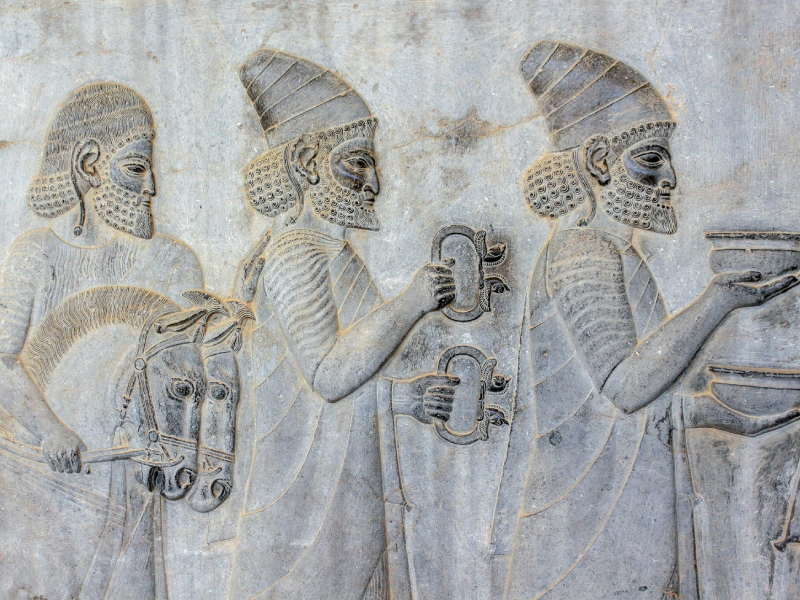
Years later, when archaeologists read the cuneiform on the inscriptions, they found that the name on the inscriptions was Persians or the Achaemenes.
Persepolis City Architecture
Persepolis is one of the largest historical buildings in the world. What can be seen from the ruins shows that the area of all buildings and the environment of Persepolis is approximately 4 hectares, that is, about 125,000 square meters.
The first buildings of the city were erected on a stone platform near Mount Rahmat. This royal palace includes four crucial sections: official and ceremonial palaces, private residences and small palaces, a royal treasury, and a protective fortress. There were two valleys on the south and north sides of this stone platform.
The Fibonacci principle was used in the construction of the columns and palaces of Persepolis. Using the golden ratio, which is one of the most intricate principles in architecture has made this location very unique.
The golden ratio is the ratio of the height of the gates to their width and the ratio of the height of the columns to the distance between two columns. Fibonacci’s golden ratio is considered as the divine ratio in geometry, and its use in Persepolis shows the skills and knowledge of ancient Persians in art and architecture.
Persepolis City Facts
Persepolis city plan before its destruction included the Achaemenid palaces and mansions, which were very scenic and were located in one of the best places in Iran at the foot of Mount Rahmat or Mehr, which was also called Mount Mitra. It had an eye-catching view of the surrounding valleys and plains.
Inside Persepolis, there was an area similar to a town, and the distance between the palaces was marked by the streets. The interior design of Persepolis was very advanced according to today’s engineering and architectural standards and precision.
Modern designs can be seen in the division of the inner neighborhoods. The palaces in Persepolis had different purposes, and each of them was used for various ceremonies and celebrations.
But what happened in the city of Persepolis?
The Fire in Persepolis
The glory of Persepolis lasted until Alexander the Great invaded Iran. In 334 BC, Alexander the Great attacked Iran with his troops, and after reaching the seat of the Achaemenid kingdom, he looted the houses and burned everything in Persepolis.
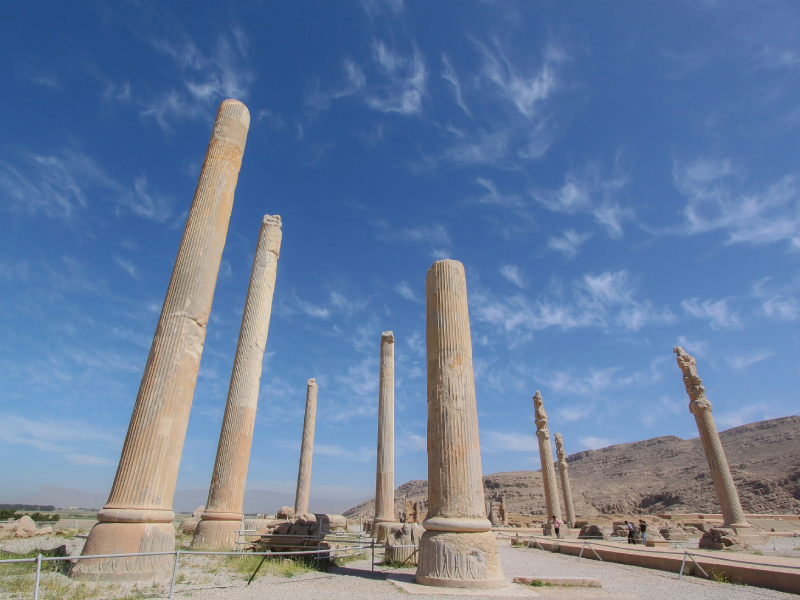
Alexander’s bitterness for the Achaemenid kings caused him to set fire to Xerxes I’s palace, but the fire spread to other places and caused the destruction of large parts of Persepolis.
The Interior Monuments
Persepolis includes many sections and palaces. Below is an introduction to different sections of Persepolis from the northwest corner of the complex:
At first, there is a large entrance with 111 steps ahead of you; climbing the entrance stairs, you will reach the Palace of The Gate of All Nations. Then, you will pass through the Apadana courtyard, where you see the Apadana, Tachara, and Hadish palaces.
At this point, you should continue to the northeast to see the Palace of the Three Gates, the Harem of Xeres, the Museum, and the Half-Finished Gate of Persepolis. Next, go up the eastern hill and sightsee the tombs of Ardeshir II and III.
Finally, through Parade Street in the north of the complex, you will return to the large entrance stairs again.
Persepolis Columns
One of the most famous remaining structures in Persepolis are the columns and column heads discovered in this city. Although the complex is far from its original state, these columns show the original grandeur and glory of this place. These columns are very tall and heavy, and the way they are made is yet very fascinating for architects and archaeologists.
The columns of Persepolis are evidence to depict the greatness of the structures in Persepolis that have disappeared today, but by looking at these intact columns, you can conceive the power of the palaces in the past. The columns of Persepolis were a small part of the Achaemenid palaces. Of the 72 pillars of Apadana Palace, only 14 remain today.
The Best Time to Visit Persepolis
Visiting Persepolis in hot seasons can be difficult due to the open area of Persepolis and the direct sunlight. The best time to travel to Persepolis is in the second half of the year. You can visit Persepolis until the end of April. It is better to choose the early hours of the day to visit the historical area of Persepolis or in the afternoon when the weather gets cooler.
In the cold seasons of the year, after sunset, Persepolis and its surroundings are very cold. Do not forget to wear appropriate clothes.
Persepolis City Map
Persepolis City, located in the plains of Marvdasht, is surrounded by the southern Zagros mountains in the Fars province of Iran and is recognized as one of the significant Iranian Cultural heritages.
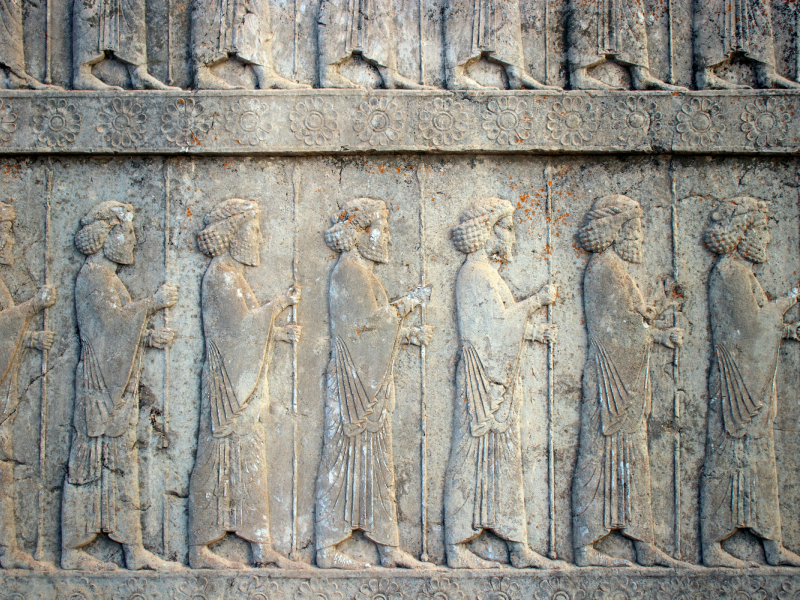
Shiraz is located 60 km southwest of Persepolis.
Address: Fars Province, Marvdasht, Persepolis Street
Persepolis City Reconstruction
Several years ago, many experts volunteered to rehabilitate Persepolis in order to preserve this national and world heritage. The first attempt to reconstruct Persepolis was made in the early years after its destruction, and many kings tried to prevent its fall by repairing some palaces.
In the last century, in 1930, a group of American orientalists from Chicago attempted to reconstruct this historical monument, and during their excavations, they managed to find the inscription of King Xerxes, An inscription that showed that the mansion was actually the queen’s palace. Other discoveries were made in the later excavations.
Final Word
The palaces of Persepolis are extremely ancient, and for this reason, the observance of some points in the construction of the building and the way of doing this work, the details of which are found in the inscriptions, are considered among the wonders of Persepolis today. Persepolis City is now one of the most popular tourist attractions in Iran.
There is also a park in the outer space of Persepolis made available for visitors to relax. Persepolis is an opulent relic left by the kings of the Achaemenid period of Persia.
Are you planning to travel to Iran and looking for an Iran resort? Consider Matinabad Eco-resort.

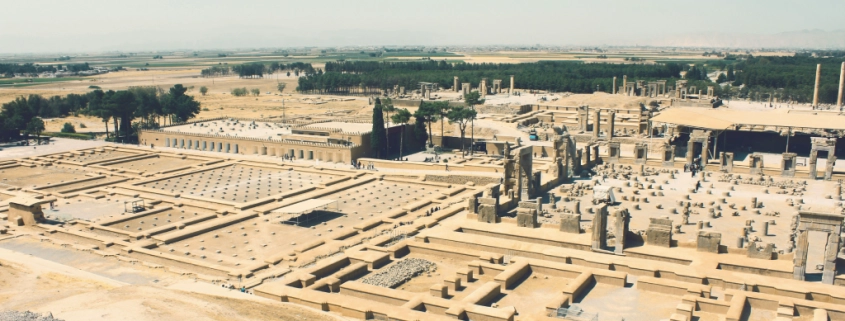



Leave a Reply
Want to join the discussion?Feel free to contribute!